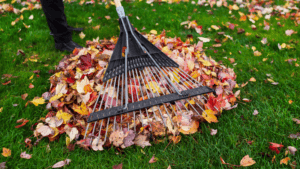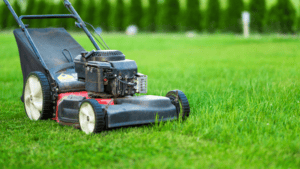Spring has officially sprung, and you know what that means – it’s time to give your lawn some much-needed attention after the long winter months. But where do you start? Don’t worry, because we’ve got you covered with this essential spring lawn care checklist. Follow these steps, and you’ll be well on your way to a lush, healthy lawn that’s the envy of the neighborhood.
Assess the Damage
The first step in your spring lawn care routine is to assess the damage left behind by winter. Take a walk around your yard and look for any signs of damage, such as dead patches, thatch buildup, or compacted soil. Identifying these issues early will help you address them before they become more significant problems.
Clean Up Debris
Next, it’s time to clean up any debris left behind by winter storms. Use a leaf rake or dethatching rake to remove dead leaves, branches, and other debris that may have accumulated on your lawn over the winter months. Clearing away this debris will allow air, water, and nutrients to reach the soil more effectively and promote healthy growth.
Test Your Soil
Before you start applying fertilizers or other treatments to your lawn, it’s a good idea to test your soil to determine its pH level and nutrient content. You can purchase a soil testing kit at your local garden center or contact your county extension office for assistance. Once you know the condition of your soil, you can make more informed decisions about how to care for your lawn.
Start Fertilizing
Once you’ve assessed your soil, it’s time to start fertilizing your lawn. Spring is the perfect time to give your grass a boost of nutrients to help it green up and grow strong. Choose a high-quality lawn fertilizer specifically formulated for spring application, and follow the manufacturer’s instructions for application rates and timing.
Overseed Bare Patches
If you have any bare patches or thin areas in your lawn, spring is the ideal time to overseed. Overseeding helps fill in bare spots and promote thicker, healthier turf. Choose a high-quality grass seed that’s appropriate for your climate and soil type, and spread it evenly over the bare areas of your lawn. Keep the newly seeded areas moist until the grass germinates and establishes itself.
Mow Regularly
As the weather warms up and your grass starts to grow more rapidly, it’s essential to stay on top of your mowing routine. Set your mower to a height of around 2.5 to 3 inches and mow your lawn regularly to promote healthy growth and discourage weeds. Be sure to mow when the grass is dry to achieve a clean, even cut.
Water Wisely
Proper watering is crucial for maintaining a healthy lawn in the spring and throughout the growing season. As the weather warms up, be sure to water your lawn deeply and infrequently to encourage deep root growth. Aim to water early in the morning to minimize evaporation and reduce the risk of fungal diseases.
Keep an Eye Out for Weeds
Finally, keep an eye out for weeds and take action to control them before they take over your lawn. Hand pulling weeds can be effective for small infestations, but for larger areas, you may need to use an herbicide. Be sure to choose an herbicide that’s appropriate for your grass type and follow the manufacturer’s instructions carefully.
By following these steps and staying on top of your lawn care routine, you’ll be able to enjoy a beautiful, vibrant lawn that’s the pride of the neighborhood.



